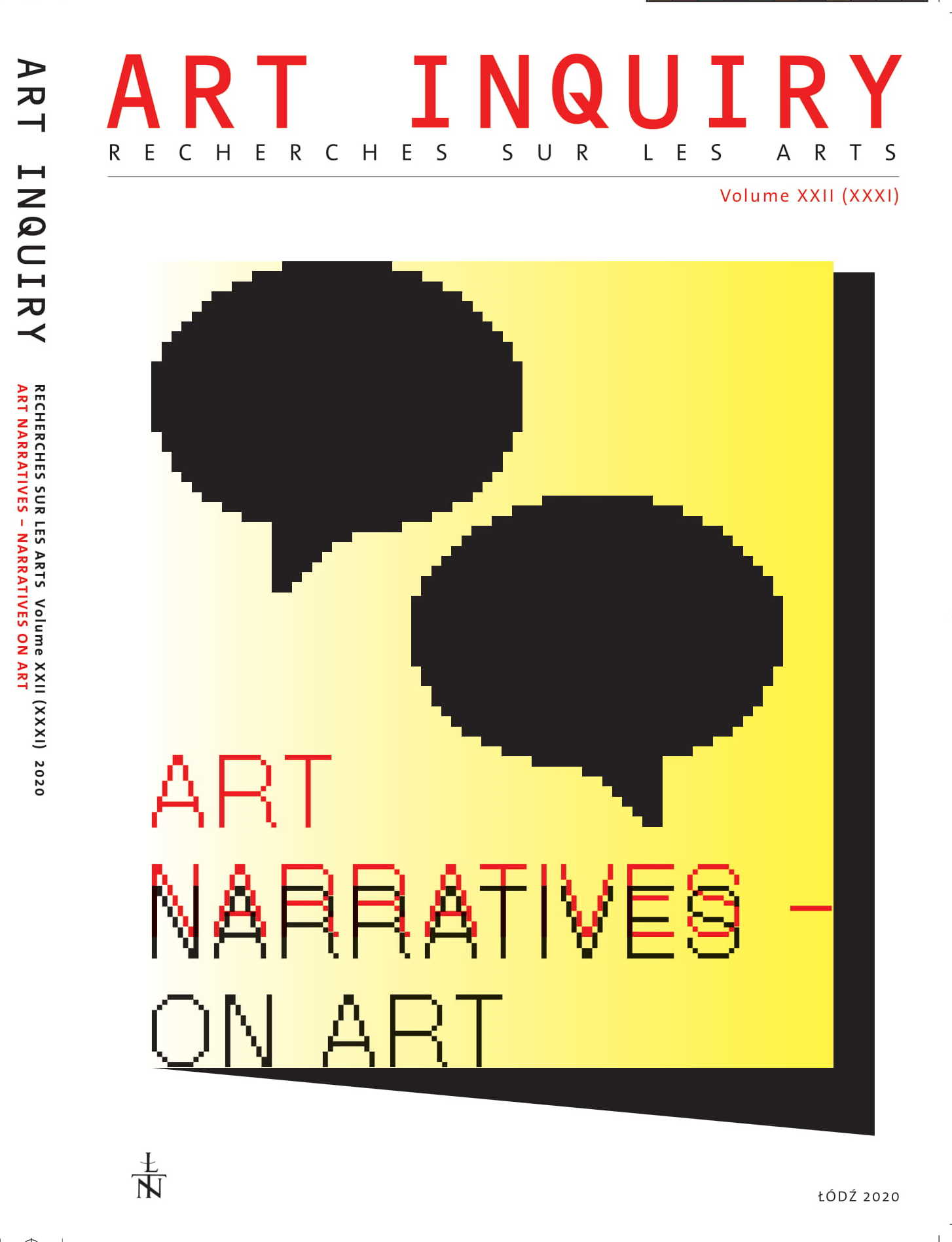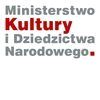Performatywna narracyjność bioobrazów w kontekście biowładzy, biopolityki i „Wojny obrazów” po 11 września jako przykłady współczesnej klonofobii i ikonofobii
DOI:
https://doi.org/10.26485/AI/2020/22/9Słowa kluczowe:
performatywność, narracyjność, bioobraz, biopolityka, biowładza, wojna obrazów, wojna z terrorem, ikonofobia, klonofobiaAbstrakt
W tym eseju podjęto próbę nakreślenia głównych zagadnień studiów kultury wizualnej jako wyłaniającej się, formacji teoretycznej performatywnej narracyjności bioobrazów w kontekście biowładzy, biopolityki i „wojny obrazów” jako przykładów ikonofobii oraz klonofobii. Przedmiot performatywnej narracyjności bioobrazów został podjęty w dyskusji nad niektórymi, głównymi ideami, które wydawały się fundamentalne zarówno dla negatywnych, jak i pozytywnych aspektów podmiotowej koncepcji działania „podmiotów wizualnych” W.J.T. Mitchella w kontekście reprodukcji znaczenia i iterowalności. Koncepcja bioobrazów obejmuje również takie pojęcia, jak sama idea analogii do żywych form organizmów, która jest metaforyczną relacją, podobną z natury rzeczy, do relacji między ciałami biologicznymi i społecznymi. Narracyjne kwestie bioobrazów są podejmowane,w scenach, gdzie widzimy welociraptora z literami kodu DNA wyświetlanymi na jego skórze w Jurassic Park Stevena Spielberga (1993) oraz anonimowych Szturmowców, którzy maszerują na śmierć w Star Wars, Episode II: Attack of the Clones (2002). Performatywne bioobrazy można uznać za organizmy żywe, tematycznie odwołujące się do wizualnych technik cyfrowych i inżynierii genetycznej. Mitchell pisząc o bioobrazach jako narzędziach biowładzy i biopolityki, przywołuje koncepcje Michela Foucault i Giorgio Agambena, w których biowładza i biopolityka uczestniczyły w podstawowym procesie neoliberalnej władzyoraz tworzenia żywych istot podczas sprawowania nad nimi kontroli. W tym eseju narracyjnei performatywne cechy obrazu jako „podmiotu wizualnego” zostały opisane w teorii feministycznej, kulturoznawstwie (Jacques Lacan, Stuart Hall) i studiach kultury wizualnej (Nicholas Mirzoeff). Artykuł zawiera opisy kolażu fotograficznego From Dust to DNA Kevina Clarke’a i Mikeya Flowersa i muralu na wiadukcie na drodze do Tikritu, przedstawiającego armię klonów Saddama. Te dzieła sztuki zostały omówione w kontekście „Wojny z Terrorem”, w której wszelki współczesny terroryzm jest bioterroryzmem, opartym na „samobójczej metaforze” „choroby autoimmunologicznej” używanej przez Jacquesa Derridę. Esej kończy się odniesieniem do koncepcji „bliskiego czytania” Mieke Bal, w której performatywność łączy się z narracyjnością, ponieważ narratorzy mogą przypisać działanie podmiotowi narracji i ucieleśniają obawy związane z tworzeniem i niszczeniem obrazów (ikonoklazmem).
Bibliografia
Agamben Giorgio (1998) Homo Sacer: Sovereign Power and Bare Life, transl. Daniel Heller--Roazen, First Edition, Stanford: Stanford University Press.
Alberti Leon Battista (1991) On Painting, transl. Cecil Grayson, ed. Martin Kemp, “Penguin Classics”, London and New York: Penguin Books.
Alpers Svetlana (1984) The Art of Describing: Dutch Art in the Seventeenth Century, First Edition, Chicago: The University of Chicago Press.
Bal Mieke and Bryson Norman (1991) “Semiotics and Art History,” The Art Bulletin, Vol. 73, No. 3, pp. 174–208.
Bal Mieke (2017) Narratology: Introduction to the Theory of Narrative, transl. Christine Van Bohe¬emen, Fourth Edition, Toronto, Buffalo, and London: University of Toronto Press.
Baxandall Michael (1988) Painting and Experience in Fifteenth Century Italy: A Primer in the Social History of Pictorial Style, Second Edition, Oxford and New York: Oxford University Press.
Bon Gustave Le (2017) The Crowd, transl. Robert A. Nye, Second Edition, London and New York: Routledge.
Borradori Giovanna (2003) Philosophy in a Time of Terror: Dialogues with Jürgen Habermas and Jacques Derrida, First Edition, Chicago and London: The University of Chicago Press.
Bredekamp Horst (2018) Image Acts: A Systematic Approach to Visual Agency, transl. Elizabeth Clegg, “Image – Word – Action,” First Edition, Berlin and Boston: Walter de Gruyter Verlag.
Didi-Huberman Georges (2005) Confronting Images: Questioning the Ends of Certain History of Art, transl. John Goodman, Pennsylvania: The Pennsylvania State University Press, University Park.
Fenske Mindy (2007) Tattoos in American Visual Culture, First Edition, New York: Palgrave Macmillan.
Foucault Michel (1990) The History of Sexuality, Vol. 1: “An Introduction,” transl. Robert Hurley, New York: Vintage Books, A Division of Random House.
Foucault Michel (1995) Discipline and Punish: The Birth of the Prison, transl. Alan Sheridan, Second Edition, New York: Vintage Books, A Division of Random House.
Foucault Michel (2003) Society Must Be Defended: Lectures at the Collčge de France 1975–1976, transl. David Macey, eds. Mauro Bertani and Alessandro Fontana, New York: Picador.
Foucault Michel (2008) The Birth of Biopolitics: Lectures at the Collège de France 1978–1979, transl. Graham Burchell, ed. Michel Senellart, New York: Palgrave Macmillan.
Foucault Michel (2009) Security, Territory, Population: Lectures at the Collège de France 1977–-1978, transl. Graham Burchell, ed. Michel Senellart, New York: Palgrave Macmillan.
Hall Stuart (1992) “The Question of Cultural Identity,” in: Stuart Hall, David Held, and Tony McGrew eds., Modernity and its Future, Cambridge and Oxford: Polity Press and the Open Uni¬versity, pp. 273–326.
Hall Stuart (2003) “Cultural Identity and Diaspora,” in: Jonathan Rutherford ed., Identity: Com¬munity, Culture and Difference, First Edition, London: Lawrence and Wishart, pp. 222–237.
Jones Amelia (2006) Self/Image: Technology, Representation, and the Contemporary Subject, Lon¬don and New York: Routledge.
Jones Amelia (2012) Seeing Differently: A History and Theory of Identification and the Visual Arts, London and New York: Routledge.
Lacan Jacques (1998) “The Four Fundamental Concepts of Psychoanalysis,” transl. Alan Sheri¬dan, in: Jacques A. Miller ed., The Seminar of Jacques Lacan, Book XI, New York and London: W. W. Norton Company.
Latour Bruno (2005) Reassembling the Social: An Introduction to Actor-Network-Theory, “Claren¬don Lectures in Management Studies,” First Edition, Oxford and New York: Oxford University Press.
Lemke Thomas (2011) Biopolitics: An Advanced Introduction, transl. Eric F. Trump, New York and London: New York University Press.
Lyotard Jean-François (1984) The Postmodern Condition: A Report on Knowledge, transl. Geoff Bennington and Brian Massumi, “Theory & History of Literature,” First Edition, Oxford and Manchester: Manchester University Press.
Mirzoeff Nicholas (1999) An Introduction to Visual Culture, First Edition, London and New York: Routledge.
Mirzoeff Nicholas (2002) “The Subject of Visual Culture,” in: Nicholas Mirzoeff ed., The Visual Culture Reader, Second Edition, London and New York: Routledge,pp. 3–23.
Mitchell W.J. Thomas (1994) Picture Theory: Essays on Verbal and Visual Representation, Chica¬go and London: The University of Chicago Press.
Mitchell W.J. Thomas (2002) “Showing Seeing: A Critique of Visual Culture,” Journal of Visual Culture, Vol. 1, No. 2, pp. 165–181.
Mitchell W.J. Thomas (2005) What Do Pictures Want?: The Lives and Loves of Images, Chicago and London: The University of Chicago Press.
Mitchell W.J. Thomas (2007) “Picturing Terror: Derrida’s Autoimmunity,” in: W.J. Thomas Mit¬chell and Arnold I. Davidson eds., The Late Derrida, Chicago: The University of Chicago Press, Critical Inquiry Book, Vol. 33, No. 2, pp. 277–290.
Mitchell W.J. Thomas (2011) Cloning Terror: The War of Images, 9/11 The Present, Chicago and London: The University of Chicago Press.
Murray-Brown Jeremy (1991) “Video Ergo Sum,” in: Alan M. Olson, Christopher Parr, and Debra Parr eds., Video Icons and Values, New York: State University of New York Press, pp. 17–31, 150–151.
Sturken Marita and Cartwright Lisa (2017) Practices of Looking: An Introduction to Visual Culture, Third Edition, New York and Oxford: Oxford University Press.





